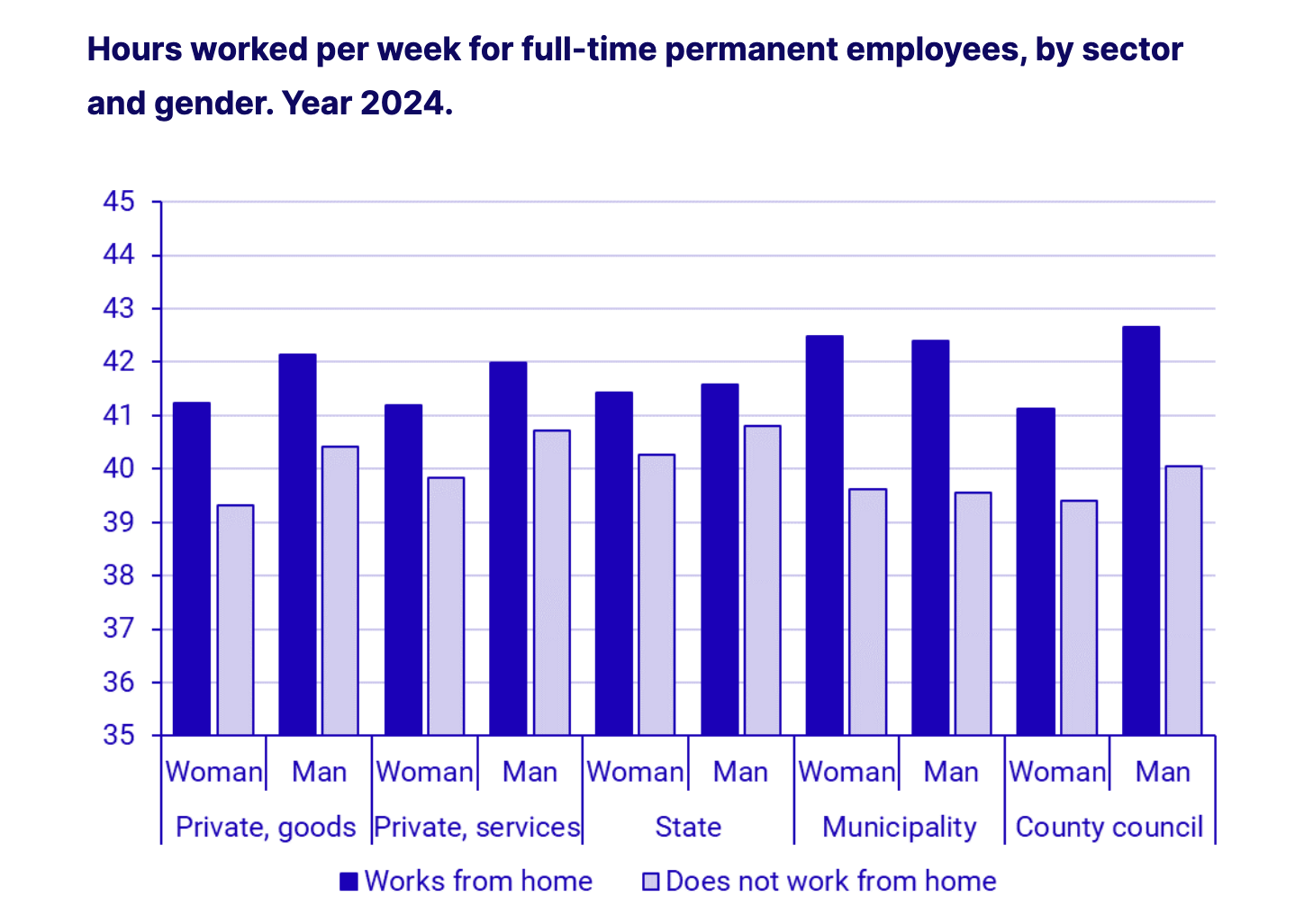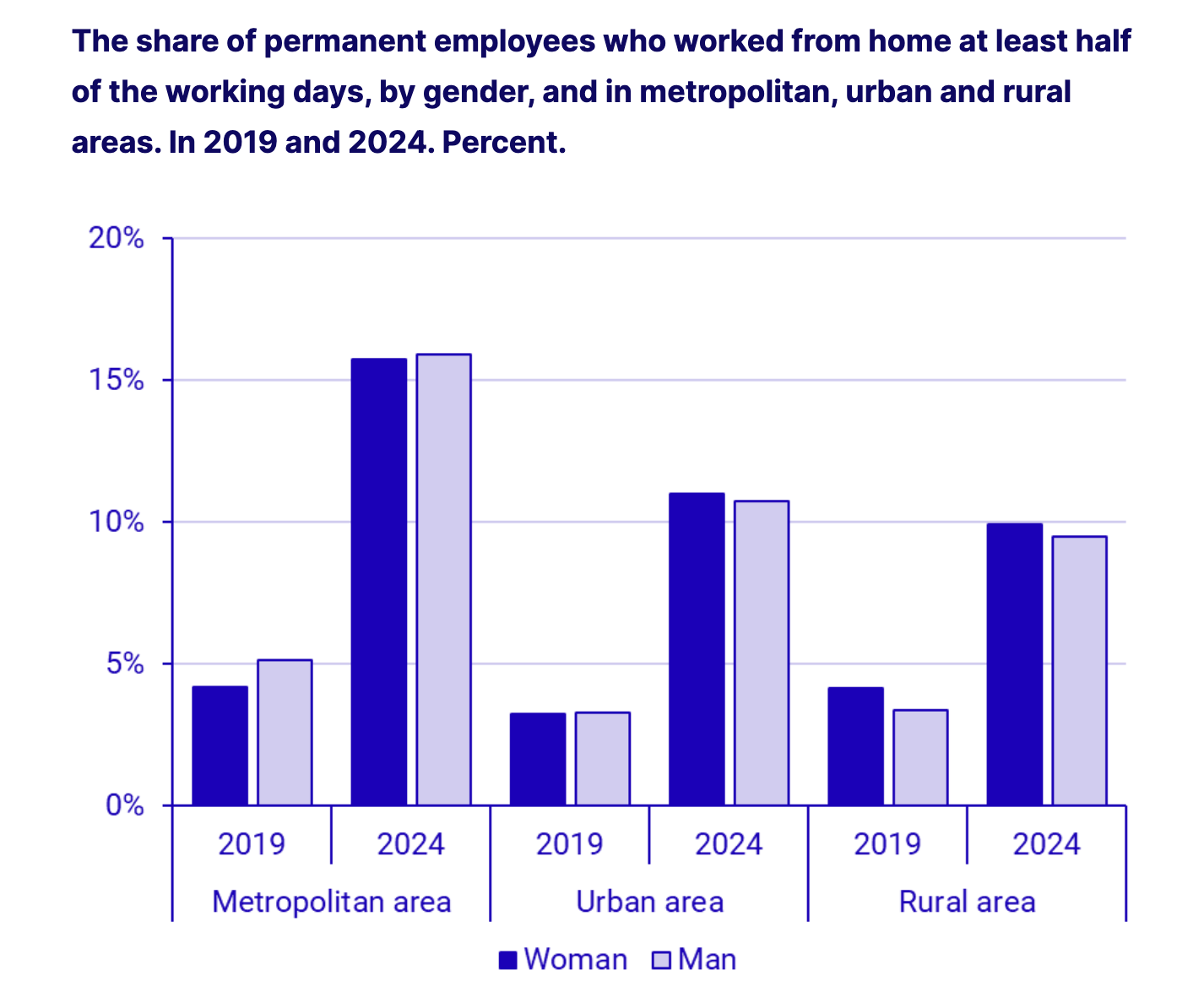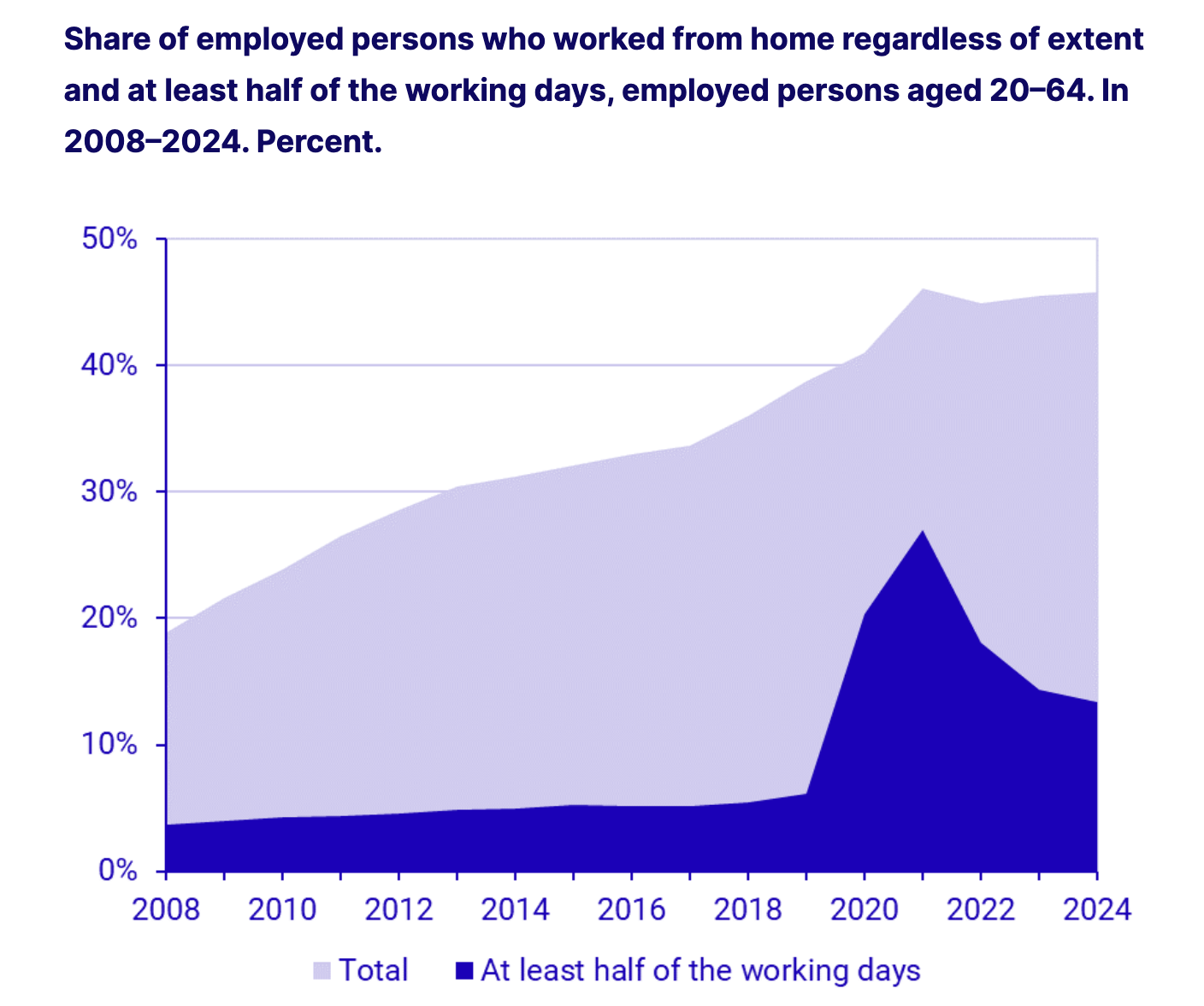Many in Sweden still work from home, though frequency Is slowly declining
Working from home remains a significant feature of employment life in Sweden, with levels still far above pre-pandemic norms, according to new data from Statistics Sweden’s Labour Force Surveys (LFS). The report reveals that while the share of people working from home has slightly declined since the peak of the pandemic, it remains a core part of the work routine for many, especially among permanent employees aged 20–64.
In 2024, around 46 percent of employed Swedes in this age group reported working from home to some extent—a dramatic rise from 2008, when the figure stood at just 20 percent. The most substantial growth has occurred among those who work remotely at least half of their working days. That share rose from just 6 percent before the pandemic to about 13 percent in 2024. While this figure is slightly down—by less than one percentage point—from 2023, the trend remains remarkably high compared to pre-pandemic patterns.
“The share of people who often work from home has decreased slightly but remains at a high level,” said Stefan Andersson, a statistician at Statistics Sweden. “We also see that those who work from home tend to log more hours overall.”
Remote work is particularly common among permanent employees aged 30–54. For this group, the share working from home at least half of the time increased from around 4–5 percent in 2019 to 14 percent for both men and women in 2024.
Education and sector also play a significant role in who works from home. Employees with post-secondary education, especially those in the private service sector or the state sector, are far more likely to work remotely. In these groups, the share working from home at least half the time has roughly doubled since 2019—from 10 to 22 percent in the private sector and from 12 to 21 percent in the state sector. In contrast, municipal sector workers have seen a decrease in remote work, dropping from 7 to 5 percent—likely due to the nature of roles that require physical presence.
Geographically, working from home is most common in Sweden’s metropolitan areas, where just over 15 percent of workers regularly work remotely. In urban and rural areas, the figure stands closer to 10 percent. Before the pandemic, remote work levels were more evenly spread across regions, but the shift toward remote work has since been concentrated in larger cities.
The report also examined how remote work affects the number of hours worked. Overall, individuals who work from home report slightly higher average weekly working hours than those who do not, a pattern consistent across most sectors. The largest gap is seen in the municipal and county council sectors, where remote workers logged nearly three more hours per week on average. Interestingly, in the IT sector—where remote work is most widespread—employees who work from home reported working about one hour less than their on-site counterparts.
Using a regression model, Statistics Sweden found a positive link between remote work and longer working hours, particularly among younger and older workers, individuals without post-secondary education, and those living in rural areas. In professions such as teaching and management, remote work is associated with working two to four more hours per week. However, this trend reverses in some high-tech fields like IT, where home-based work is associated with slightly fewer hours.
While remote work habits are evolving, the overall findings suggest that working from home is here to stay for a large segment of the Swedish workforce, albeit with variations across age, profession, education, and location.
Source: SCB
Data: Labour Force Survey











